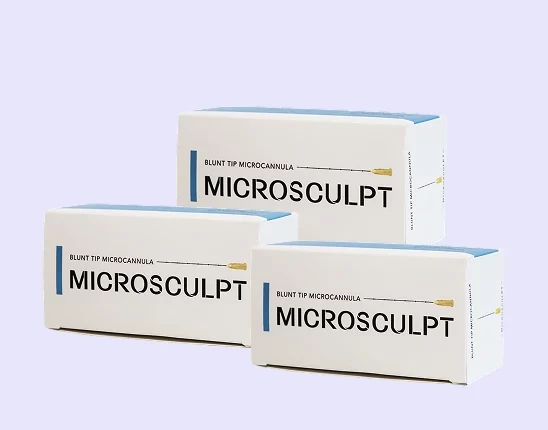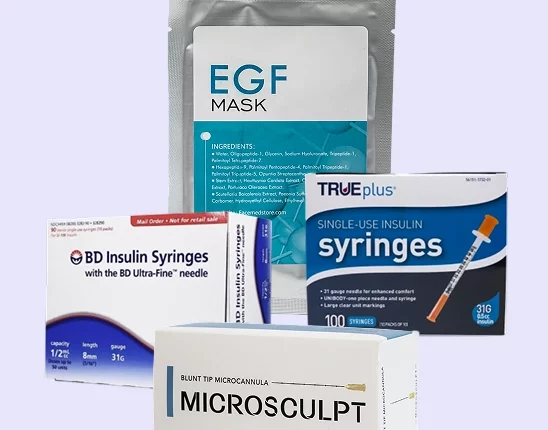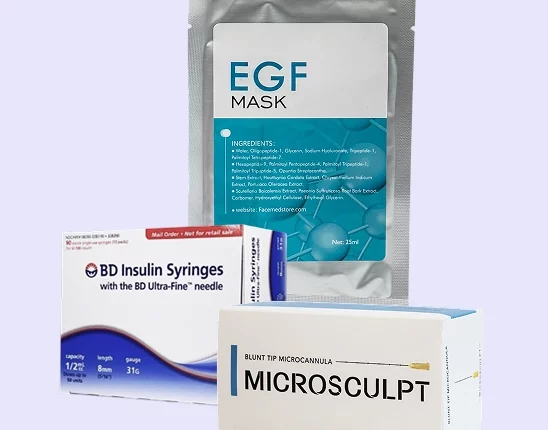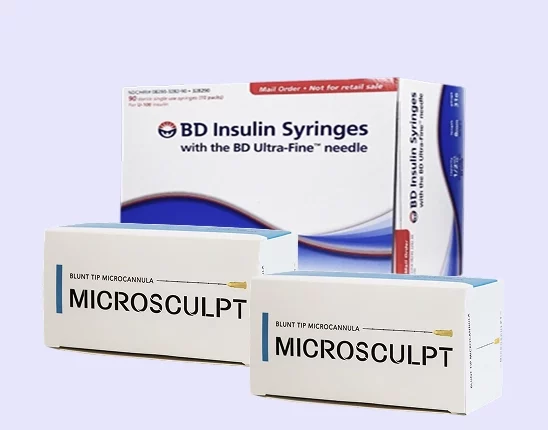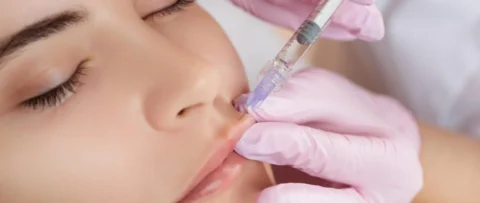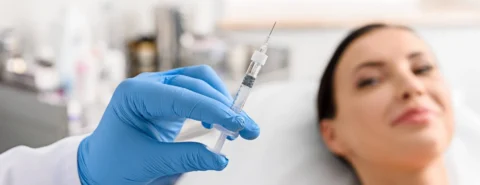Dermal filler treatment is a popular procedure that reduces the appearance of facial lines in different parts of the face, such as cheeks, jawline, nasolabial fold, and tear trough area. Cosmetic doctors administer the filler injection using a sharp needle, but a blunt tip cannula is also a great instrument that helps patients achieve better results.
So are microcannulas safe to use for tear trough treatments? The blunt tipped micro cannula is an excellent choice for dermal filler treatments around the tear trough area. It’s designed to be flexible for easy maneuvering around the sensitive area. The cannula also helps reduce different risks associated with the treatment and minimize the downtime needed.
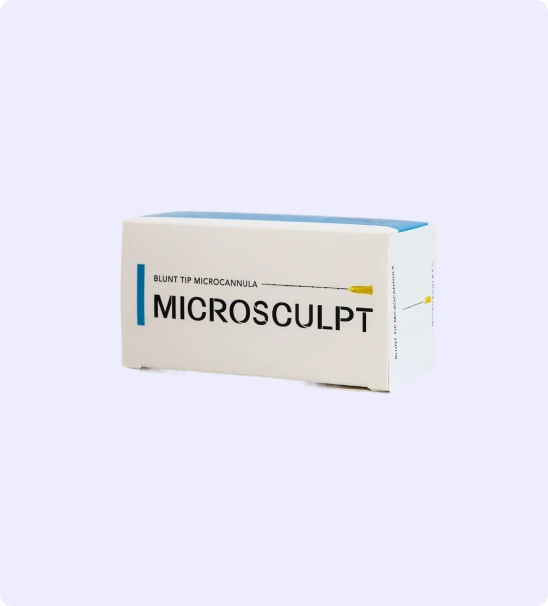
Injections Your Patients Will Love! Code “20OFF” Takes 20% off Your First Order!
Microcannulas are a tool that every great injector must master. Patients want quick results with no downtime. Our microcannulas are high quality and a fraction of the price of our competitors!
You can create an account here.
Why You Should Consider Using Microcannulas for Tear Trough Treatments
The tear trough refers to the deep crease between the upper cheek and the lower eyelid that casts a dark shadow below the eyes. This crease becomes more prominent as a person ages, but it might also be an inherited trait. Noticeable tear troughs make a person look tired and older, which is why many patients look for different treatments to alter their appearance.
Tear trough rejuvenation using dermal filler is a delicate treatment since the area around the eye is extremely sensitive. It’s the best option for individuals who don’t want to go through cosmetic surgery to reduce the appearance of the crease. The tear trough filler treatment uses hyaluronic acid dermal filler to restore the facial volume in the area.
Injectable dermal fillers like Restylane and Juvederm are injected using traditional needles or microcannula injections, but choosing which instruments work better depends on the treatment area and the doctor’s injection technique. A blunt cannula is better for a tear trough correction because it gives the injector better control on where to inject the facial filler and how much hyaluronic acid filler is needed.
How Does Microcannula Improve a Tear Trough Injection Procedure?
The micro cannula technique is becoming more popular in the field of cosmetic medicine as it helps the patient become more comfortable during the treatment. It also delivers the same results, if not better, to the patient without compromising their safety. Here are a few ways that the microcannula technique improves a tear trough filler treatment:
1. They reduce the risk of puncturing blood vessels and other injuries
The skin around the eyes is extremely thin and delicate. This makes it prone to bruising and bleeding during a tear trough treatment if the plastic surgeon or cosmetic doctor decides to use sharp needles. The blunt tip of the cannula injection minimizes the chance of accidentally puncturing a blood vessel. It also reduces the risk of vascular occlusion and skin trauma.
Needlestick injury is a common risk that comes with any type of injectable treatment, including Botox, lip filler, and eye filler. While there are disposal protocols in place, there’s still a chance that someone gets injured by a hypodermic needle. Since a microcannula has a blunt end, it’s less likely to accidentally penetrate the skin or the disposal container.
2. They deliver the injectable fillers accurately
Hyaluronic acid injectables are often administered in different parts of the face to achieve the best results. This meant that the doctor had to create multiple injection sites on the skin. Doing so increases the risk of different complications on the injection site including, bleeding, bruising, swelling, and infection.
But by using a microcannula for the undereye filler, the doctor only has to create an initial incision on the skin. The length and flexibility of the cannula are useful for easy maneuvering, allowing the doctor to deliver the dermal filler injection precisely to the treatment site. It’s also the best instrument to use for other procedures that require intravascular injection since there are fewer chances of developing complications after the treatment.
3. Patients feel less pain during the treatment
Dermal fillers administered using sharp needles have to be injected on-site, but a cannula only needs one entry point to reach the treatment area. Since there’s only one injection site, the patient’s skin experiences less stress which allows them to recover faster. The entry point created during the undereye filler treatment is also useful to reaching adjacent sites, like the cheeks.
The blunt tipped cannula is also less intimidating than sharp tip needles for patients. Pointed needles are often associated with pain and patient anxiety, which is why seeing a blunt end instrument helps them cope with the procedure better and feel at ease during the treatment. By using a cannula during the treatment, patients have a better injection experience with the provider.
4. They minimize the downtime needed after the procedure
In addition to their effectiveness in getting rid of different signs of aging, dermal filler treatments are also known for minimal patient downtime after the procedure. The trauma caused by a sharp needle piercing deep into the layers of the skin needs some time to fully heal, especially if there are multiple treatment sites.
Cannula helps minimize this downtime by only creating one injection site for the entire procedure. The instrument also reduces the risk of bleeding and bruising that affects the overall recovery time for most patients. It’s the best option for patients who want to return to their daily routines as soon as possible.
Should Doctors Start Using Microcannulas for Other Facial Procedures?
While the cannula method has many benefits for a tear trough procedure, it shouldn’t be the default option for all types of treatments. Dermal fillers for other treatment areas on the face, such as the site near the lips, are more effective if a sharp-tipped needle is used.
The choice of injecting instruments also depends on the doctor’s experience in using them, as well as their understanding of the patient’s facial structure. Patients might still experience complications if the injector isn’t experienced in using a cannula for the treatment site.
Learn more: Why Aren’t All Injectors Using Microcannulas?
Get Quality Microcannulas for the Right Price at FACE Medical Supply
-
 Microcannula Multi-Gauge Precision Set
Microcannula Multi-Gauge Precision Set -
 Microcannula Complete Injection System
Microcannula Complete Injection System -
 Microcannula Size Progression Training Kit
Microcannula Size Progression Training Kit -
 Microcannula Professional Starter Kit
Microcannula Professional Starter Kit -
 Microcannula Volume Practice Pack
Microcannula Volume Practice Pack -
 23 gauge 50 mm (2 inch) Microcannulas
23 gauge 50 mm (2 inch) Microcannulas -
 22 Gauge 100 mm (4 inch) Microcannulas.
22 Gauge 100 mm (4 inch) Microcannulas. -
 27 Gauge 38 mm (1.5 inch) Microcannulas
27 Gauge 38 mm (1.5 inch) Microcannulas -
 25 Gauge 38 mm (1.5 inch) Microcannulas
25 Gauge 38 mm (1.5 inch) Microcannulas
Blunt tipped cannulas are the best injecting instrument to use during a tear trough procedure because it’s designed for easy use, less trauma, and quick patient recovery. These are all important factors to provide patients with the best results and overall treatment experience.
FACE Medical Supply is a trusted partner of several clinics and cosmetic medicine practitioners around the country. We’re committed to providing high-quality and medical-grade tools at affordable prices. Get in touch with us today to find the best quality medical tools from traditional needles to blunt-tipped cannulas.
